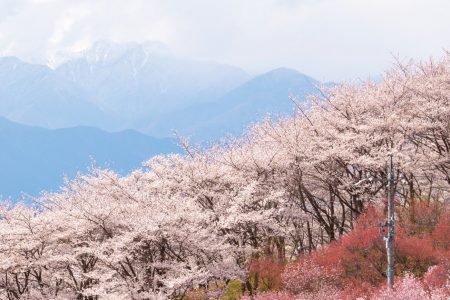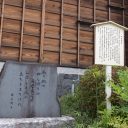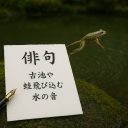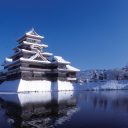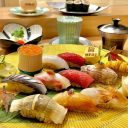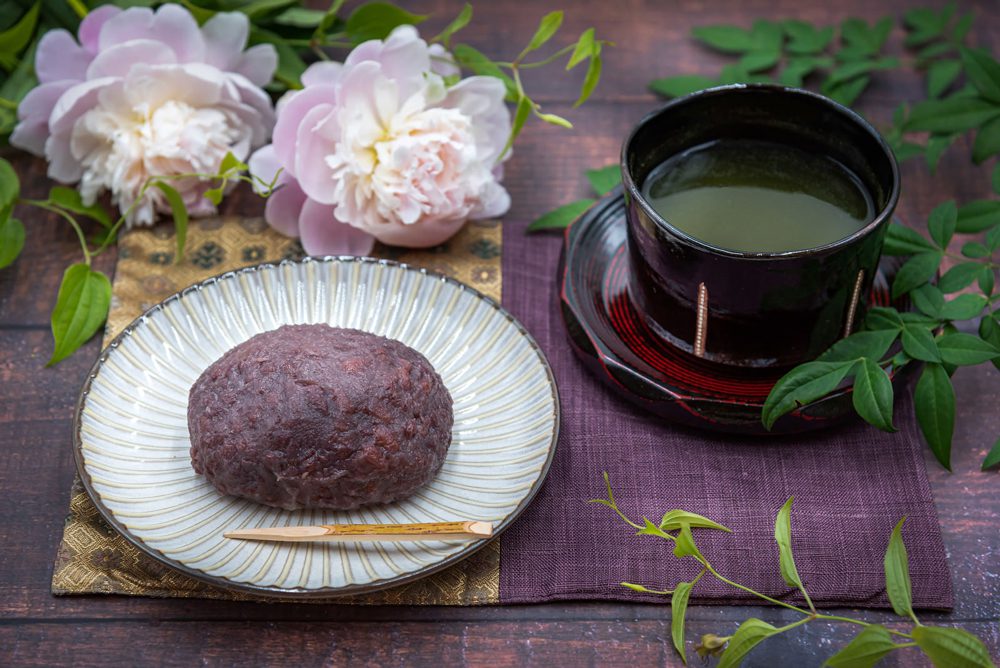
O-higan refers to the two 7-day periods made up of the Spring Equinox and Autumn Equinox days in the middle, Chūnichi (中日), Middle-day, and the three days before and after it. For example, the spring O-higan this year in Japan is from 17 March to 23 March with 20 March as Chūnichi on the Spring Equinox day in the middle. In Buddism, this period of seven days in spring and autumn are regarded as an important period to think of Gokuraku jōdo (極楽浄土), Sukhavati (Amitabha’s Pure Land, i.e., heaven, the place for afterlife) and to accumulate good deeds. During this period, many Japanese people visit temples to take part in the memorial service or visit the family grave to remember their ancestors and have a memorial service.
Origin
The Spring Equinox and Autumn Equinox days are in the middle of the O-higan period. These are days when the sun rises from the true east and sets in the true west, or the day when the length of daytime and night time are equal. In Buddhism, the true west is believed to be in the direction where the Amitabha’s Pure Land is. Therefore, these two days are considered to be the ultimate day to think of the Land of Bliss. Higan (彼岸) literally means “the other side where one can reach enlightenment by transcending life and death” as opposed to Shigan (此岸), this side where we live.
A brief history
It is believed that it is only in Japan that Buddhism rituals are held during the O-higan periods. Those rituals started in the imperial court at the beginning of the Heian (平安) period (794-1191). According to the “Nihon Kōki (日本後記)”, a book on Japanese history written in the Heian period, an O-higan ritual was held in the imperial court in 806. In addition, O-higan rituals also appeared in diaries and novels written in the Heian period such as Genji Monogatari (源氏物語), Kagerō Nikki (蜻蛉日記) and Sarashina Nikki (更級日記). It was in the Edo (江戸) period (1603-1868) that people started to visit their family graves dufing the O-higan period. Nowadays, both Equinox days are designated as public holidays in Japan. It is expected that people praise nature, cherish living things, pay their respects to ancestors and remember the deceased on these days.
What to do on the O-higan day?
Peope are encouraged to put into practice the following six virtues every day, though it feels difficult to do so amidst the busy lifestyle these days. The six virtues are (1) Fuse (布施), offering to others, (2) Jikai (持戒), abiding by precepts and reflect on oneself, (3) Ninniku (忍辱), persevering without complaints, (4) Shōjin (精進), devoting yourself and making an effort, (5) Zenjō (禅定), stabilising one’s mind and (6) Chie (智慧), cultivating one’s wisdom to identify truth. Therefore, people are expected at least twice a year, in these days in spring and autumn, to put these into practice by visiting the graveyard of their ancestors to remember and thank them and clean the Buddhist altar at home.
O-hagi (おはぎ)・Botamochi (ぼた餅)
It is common to make special foods such as O-hagi or Botamochi and offer them to the grave or Buddhist altar at home. It is widely accepted that the two names are referring to the same food, but they have different etymologies. O-hagi comes from the flower, Hagi (萩), a Japanese bush clover, which blooms in autumn in Japan, whereas Botamochi is connected to the sound Botan (牡丹), peony, which blossoms in spring in Japan. It’s a sticky rice dumpling covered with sweetened red bean jam called Anko (餡子) . There are a couple of variations of O-hagi in that, instead of sweetened red bean jam, the dumpling is covered with sweetened Kinako (黄粉), soybean flour or covered with Kurogoma (黒胡麻), black sesame. People enjoy the O-hagi or Botamochi after offering them to the ancestors.
Author
Shunichi Ikeda
BAS Hons (ANU)
MEd (SUNY at Buffalo)
Visiting Fellow, ANU College of Asia and the Pacific
